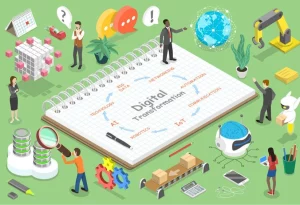How often are you disappointed by poor service? For most people, the answer is too often.
The reasons for poor customer service range from poor hiring, ineffective (or invisible) training, poor attitude, and inadequate resourcing. Most customers don’t really care why – they’ll vote with their feet and leave. They will also share their experience with their friends online, damaging the brand even further.
Online customer service is even more problematic – consider the differences:
- Customer expectations are very high, especially for problem resolution. Sometimes the customer’s expectations are unrealistic, and they need to be told so.
- Customer Service needs to be as connected online as they are over the phone. Many companies now have Twitter customer service reps, but they are trained to empathize – and are powerless to resolve.
- The geography for sales may be far wider. Online business may need to cater to customers in several languages and several time zones. Using offshore support resources sounds good, but forcing the support agents to mindlessly follow a script is off-putting to many customers.
- It is possible to use databases to manage issues as they come up. Sadly, this has resulted in machine-oriented auto-responses, when a real conversation with a real person – not an anonymous ‘agent’ – would have addressed the issue far more effectively.
- Social Media means that word travels fast – for the good or for the bad. This speaks to the importance of monitoring – otherwise known as listening to the market.
In Marketing Services: Competing Through Quality, author Leonard Berry determined that there were five determinants of Service Quality: Responsiveness, Reliability, Empathy, Assurance, and Tangibles. Of these five, his research noted that the majority of service quality issues are connected to Responsiveness, then Reliability. Do well on these two, then you’re good to go.
Consider: using customer service agents with generic email addresses doesn’t engender assurance. Form letter responses are hardly empathetic. And long customer service wait times are the antithesis of responsiveness. The push for efficiency and cost effectiveness cause many businesses to lose sight of the basics. And there is no line item on the balance sheet that says Service Quality: it’s not surprising that customer service is so poorly funded and executed.
This week’s action item: Try some mystery shopping in your own business: if you complain, what is the response? How quickly do they respond? Is their response automated, templated, or customized?
Marketing insight: Customer service works on the individual level too. Who do you serve at work, at home, and amongst your friends? How responsive are you when they reach out? And how reliable are you when you make promises – do you always deliver?
President of 108 ideaspace, Randall Craig is a leading Social Media & Web Strategist. We share Randall Craig’s blog here on 108 ideaspace. However, the Make It Happen Tipsheet is also available by email. Go to www.RandallCraig.com to register.
This post has been written by 108’s Senior advisor and former CEO Randall Craig.
For information on our upcoming events, click on the links below:
Ten Tests: Will your Website Last the Year? – December 5, 2013 (No-cost Webinar)











